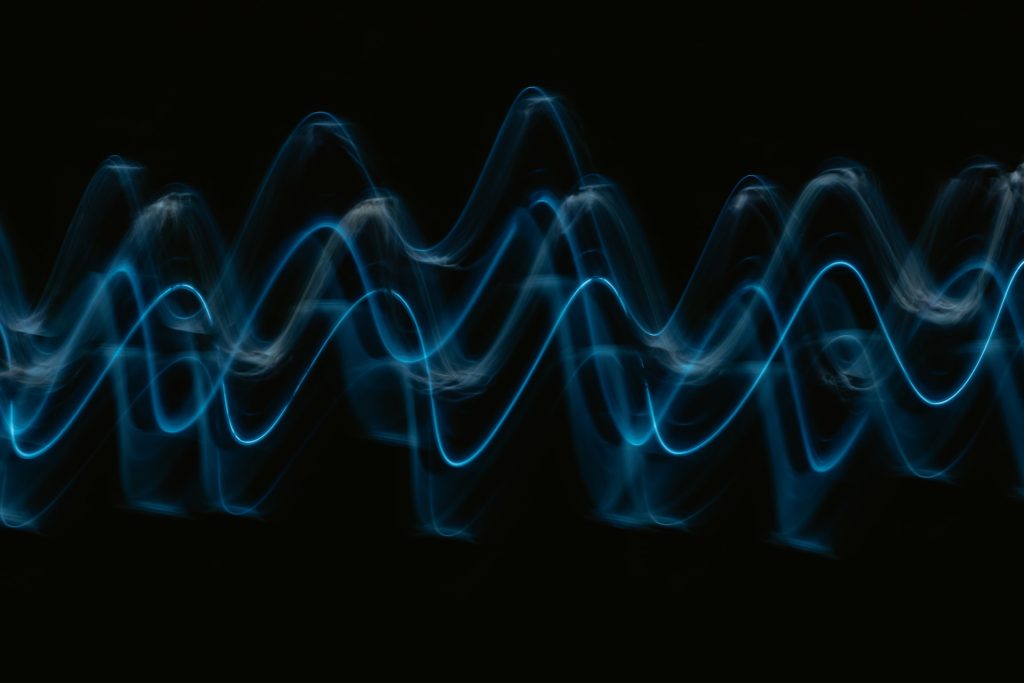Sound, a ubiquitous companion in our daily lives, is both a marvel and a mystery. We hear it, feel it, and respond to it, but what exactly is sound, and where does it come from? In this auditory exploration, we will dive into the depths of sound, understanding its composition, absorption, and the fascinating journey it takes upon to reach our ears.

The Essence of Sound
The Dance of Vibrations
At its core, sound is a vibration, a rhythmic dance of molecules in the matter that surrounds us. Whether it’s the rustle of leaves, the melody of a song, or the crash of waves, sound emerges when molecules are set into motion. These vibrations, transmitted through solids, liquids, and gases, create what we perceive as sound waves.
A Spherical Symphony
Visualize the air around you as a sea of countless molecules, gently dancing in the emptiness of space. When a disturbance occurs, when something moves fast enough to disrupt the tranquility, a domino effect ensues. The disturbed molecule collides with its neighbors, setting off a chain reaction that radiates outward in a sphere. This spherical shockwave, much like ripples in a pond, is what we hear as sound.
Wavelength and Pitch
The pitch of a sound, the high or low quality we perceive, is intricately tied to its wavelength. As air molecules vibrate, the frequency of their oscillation determines the pitch. A higher frequency results in a shorter wavelength and a higher-pitched sound, like the sharp notes of a whistle. Conversely, a lower frequency produces a longer wavelength, creating deep, rumbling tones akin to an earthquake.
Loudness and Perception
Decoding the Decibels
Loudness, the perceived volume of a sound, is not dictated by wavelength but by amplitude. Amplitude refers to the strength of the soundwave, and it’s measured in decibels (dB). The logarithmic nature of the decibel scale means that a small increase in decibels corresponds to a substantial increase in perceived loudness. Akin to a logarithmic sonic journey, a 10 dB increase sounds twice as loud to our ears.
Equal Loudness Contours
Navigating the complex world of psychoacoustic perception, scientists developed equal loudness contours. These contours illustrate the frequencies that humans perceive as equally loud. Our perception of loudness is influenced not just by decibels but by pitch, character of the soundwave, and duration of exposure. A distorted guitar may sound louder than an acoustic guitar at the same decibel level due to the intricacies of the sound wave.

The Enigma of Sound Propagation
The Inverse Square Law
As our sonic adventure unfolds, the question arises: why doesn’t sound keep propagating indefinitely? The answer lies in the Inverse Square Law, revealing that as a sound wave travels, it loses energy. Imagine the expanding shockwave as a sphere; the energy, initially concentrated, spreads over a larger surface, resulting in a decrease in intensity. The sound intensity drops dramatically, roughly proportionate to the inverse of the distance squared.
Sound Absorption: Taming the Waves
In the pursuit of acoustic serenity, understanding sound absorption becomes crucial. When sound encounters a medium transition, such as moving from air to a solid surface, part of the wave reflects back. Effective sound absorption materials, like foam, bonded cotton, fiberglass, and specific rubbers, minimize reflection. These materials absorb more sound than they reflect, swiftly dissipating the sound wave within them.
The Symphony of Silence: Noise Reduction and Perception
Signal to Noise Ratio
In the constant battle against unwanted noise, the signal-to-noise ratio becomes a critical concept. This ratio gauges the balance between the desired sound and the surrounding noise. In an environment with a high noise floor, even a moderately loud voice may struggle to be heard. Achieving a favorable signal-to-noise ratio involves minimizing ambient noise to enhance the clarity of desired sounds.
Ambient Background Noise
Ambient background noise, an ever present hum in our lives, varies with location. Urban areas pulsate with ambient noise levels ranging from 60 dB to over 80 dB, akin to an office environment or the roar of a distant jet. Suburban tranquility brings ambient levels down to 45-50 dB. Strikingly, complete absence of background noise can lead to sensory discomfort, emphasizing the importance of moderation in our acoustic environments.
Sealing the Symphony: The Impact of Sound Leak and Insulation
The Perils of Sound Leak
Imagine soundproofing an entire wall, meticulously crafting a barrier against external noise. Yet, a tiny crack beneath the door threatens the fortress of silence. Sound leaks, even minor ones, can significantly compromise the effectiveness of sound partitions. Door seals and sweeps emerge as unsung heroes, preserving the sanctity of soundproofing endeavors.
Decibel Dynamics
As we journey through the world of decibels, incremental changes wield substantial influence. Professionals in music production, recognizing the power of nuanced adjustments, often tweak volumes by mere +3dB or -3dB. The logarithmic nature of decibels intensifies these minute shifts, shaping our auditory experience in profound ways.

In our exploration of sound, from its inception in molecular dances to the intricate world of perception, we’ve uncovered the symphony that accompanies our daily lives. Sound, a dynamic force, transcends the boundaries of physics and psychology, molding the sculpture of our sensory experiences. As we seek harmony in the acoustic worlds, understanding the orchestration of sound becomes not just a pursuit of tranquility but a celebration of the intricate melodies that envelop us.





